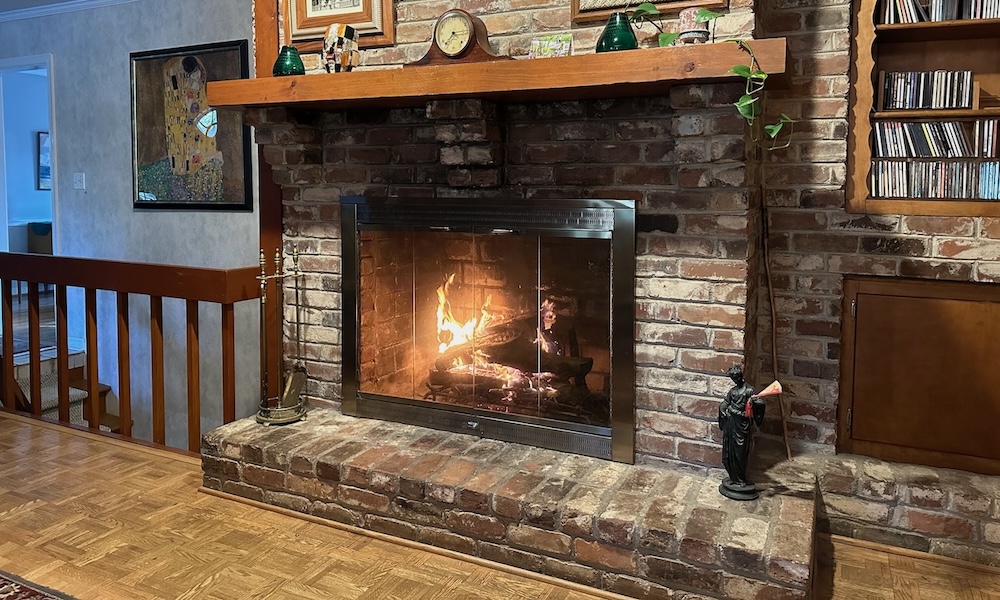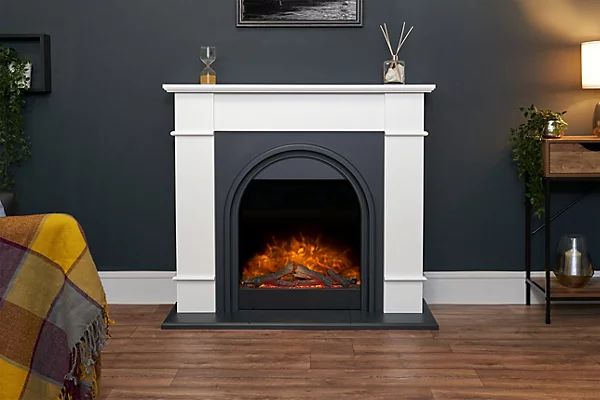
Choosing the Perfect Fireplace Suite or Multifuel Stove: A Guide for the Curious and Confused
When considering a fireplace suite or multifuel stove, many questions are bound to arise—some reasonable, others delightfully bizarre. In fact, navigating the world of hearths and stoves can feel like being dropped in the middle of a Victorian novel (minus the plague and powdered wigs). Whether you’re looking to add a warm glow to your living room or simply reduce the heating bill, making an informed choice about fireplaces and stoves is vital.
Curious about the right fireplace or stove? Read on to unravel the mysteries of selecting the ideal centrepiece for your cosy British home.
Why Choose a Fireplace Suite or Multifuel Stove?
Before diving into the details, it’s essential to understand why homeowners in the UK are turning to fireplace suites and multifuel stoves. With energy costs on the rise and the charm of open flames hard to resist, these heating solutions offer a blend of style, warmth, and efficiency. But with many models, features, and terms to decode, how can you make the right choice?
Burning Questions You Might Be Asking
Let’s start with a few fundamental questions. Some of these might seem silly, but rest assured, if you’re asking, someone else is too:
- “Is a fireplace just a fancy heater?”
While both fireplaces and stoves do heat a room, they’re not mere “fancy heaters.” A fireplace or multifuel stove adds an aesthetic and atmospheric appeal that no radiator can replicate. Imagine enjoying a cup of tea with the soft crackle of logs in the background—that’s an experience no central heating can match. - “Multifuel? Does that mean I can burn anything?”
Not quite! While “multifuel” stoves are versatile, allowing you to burn wood, coal, and certain manufactured fuels, it’s important to follow the guidelines. Burning unsuitable materials can damage your stove and void warranties. - “Can my floor support a fireplace or stove?”
It’s a legitimate concern! In most cases, a professional installation team will assess your floor’s structure and add any required reinforcements. Modern stoves and fireplace suites are designed to be lighter than traditional open fireplaces, making them suitable for many homes. Considering your options? Be sure to work with a reputable installer to determine what’s safe for your space.
Fireplace Suites: A Focal Point with Style and Substance
Fireplace suites are complete, pre-packaged units that include a surround, back panel, hearth, and often an electric or gas fire. They offer a cohesive look and can range from modern, sleek designs to traditional, ornate options. Here’s what to consider:
- Electric or Gas Options: With an electric fireplace suite, you can enjoy warmth at the flick of a switch without the need for a chimney. Gas options, meanwhile, create a real flame and often provide more heat, although they may require more ventilation and professional installation.
- Key Benefits: A fireplace suite can serve as the focal point of your living room, instantly adding style and warmth. Electric versions are low-maintenance, while gas options can be a powerful source of heat.
- Perfect for: Homeowners seeking an easy-to-install, stylish option that brings instant ambiance, particularly those without chimneys or flues.

Multifuel Stoves: Embracing Versatility and Efficiency
Multifuel stoves offer flexibility for those interested in sustainable heating or simply seeking options beyond gas or electricity. Here’s why they’re popular among UK homeowners:
- Efficient Heating: Multifuel stoves are efficient heat producers, meaning you’ll get more warmth for each piece of fuel you burn compared to traditional open fireplaces.
- Flexibility in Fuel Choices: As the name suggests, multifuel stoves allow you to burn a variety of fuels. This is beneficial for those looking to reduce heating costs or switch between wood and coal depending on what’s available or affordable.
- Eco-Friendly Potential: Burning wood or certain types of coal can be more sustainable than relying solely on fossil fuels, especially if you’re using seasoned, locally-sourced wood.
Need help choosing a model? Multifuel stoves come in an array of designs, from classic cast iron to minimalist steel, allowing you to match your stove with any interior.
Features to Consider When Choosing
When comparing fireplace suites and multifuel stoves, a few features stand out as must-consider factors:
- Heating Efficiency: Look for the efficiency rating on both electric and gas models to gauge their heat output. For stoves, check the kW rating, which will tell you the approximate room size each model can comfortably heat.
- Size and Aesthetics: Consider your room’s dimensions. A small electric fireplace can look lost in a grand living room, while a substantial cast-iron stove may overwhelm a cosy cottage.
- Ventilation Needs: Some units require a chimney or flue, while others do not. Be sure to confirm with a professional installer to avoid unexpected installation costs.
- Ease of Maintenance: Gas and electric fireplaces are generally easier to maintain than multifuel stoves, which require regular cleaning to remove ash and soot.
Understanding Installation and Safety Requirements
It’s one thing to envision a fireplace or stove in your living space, but installation and safety can be less glamorous. Here are some key points:
- Electric Models: Plug-and-go electric fireplaces and suites are simple to install, but professional advice is still recommended to ensure safety.
- Gas Fires and Multifuel Stoves: These require Gas Safe engineers or qualified HETAS stove fitters for installation. Make sure to ask about building regulations, especially regarding flues, chimneys, and hearth requirements.
- Safety First: Both electric and gas units should come with safety features, including heat shields and automatic shut-offs. Always choose a model that meets UK safety standards.
FAQ: Fireside Fears and Unusual Queries
- “Can I roast marshmallows on a gas fire?”
Tempting, but no. Gas fires are designed for visual enjoyment and warmth, not cooking. If marshmallows are on the menu, you’ll need a traditional wood-burning stove or an open fire pit. - “How do I clean a multifuel stove?”
Cleaning a multifuel stove or an inset multifuel stove requires removing ash, wiping down the glass, and occasionally having the chimney swept. It’s a small price for the warmth and charm these stoves offer! - “What if I’m just indecisive?”
With so many choices, indecisiveness is understandable! Start by considering your room size, heating needs, and aesthetic preferences. Then, consult with an expert to discuss options.
Conclusion: The Warmth of an Informed Choice
Choosing between a gas fireplace suite and a multifuel stove can be a delightful journey, transforming your home into a sanctuary of warmth and style. From electric convenience to the rustic charm of wood, there’s a model for every taste, budget, and home.
Ready to ignite your decision? Explore your options with a trusted supplier or installer to find the ideal centrepiece for your home.
